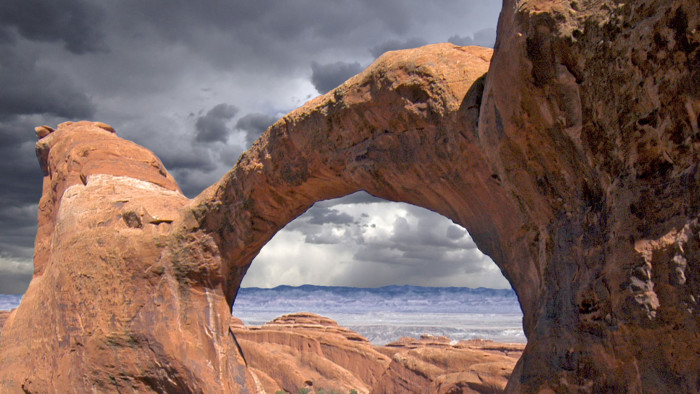Geology: an arching theory of rock erosion

Simply sign up to the Life & Arts myFT Digest -- delivered directly to your inbox.
Geologists have long sought to explain the remarkable landforms such as arches, alcoves and pillars that are shaped by the weathering and erosion of sandstone, though there has been no consensus about the main mechanisms involved. Now, after extensive experiments eroding sandstone in the laboratory, a Czech team has published a scientific paper that seems to solve the problem.
Jiří Bruthans and colleagues at Charles University in Prague write in Nature Geoscience that the answer lies in the intrinsic properties of the rock and the consolidated sand grains that make it up. Previous research has focused too much on the erosion processes rather than on the sandstone itself, they say.
Experiments with sandstone from the Strelec quarry in the north of the Czech Republic and from the southwestern US – the site of the world’s most spectacular natural monuments – show that when the rock begins to change shape through erosion (whether from wind, rain, frost or other causes) its mechanical properties change.

As erosion removes grains of sandstone around the sides of a block and the cross-sectional area of the remaining column decreases, the central support has to bear steadily more weight per square metre. The effect of this increasing pressure is to lock the remaining grains ever more tightly in place until they become very stable and resistant to further erosion.
The process can produce all sorts of strange sculptural forms, depending on chance effects in the way weathering starts and random irregularities in the composition of the sandstone.
Once formed, a natural arch or buttress can channel stress down to the earth, like a man-made architectural feature. But if it does collapse and the gravitational stress disappears, the blocks of sandstone lying on the ground lose their mechanical strength and quickly disintegrate.

The state of Utah has the world’s greatest concentration of natural arches – above all in Arches National Park where there are 2,000, including the famous Delicate Arch. Their stability is increasingly being tested by adventurers who use them as a setting for extreme sports.
The latest craze in Utah is “rope swinging”: you climb to the top of the arch, tie a rope to it and swing like a pendulum through the arch. The US government, which owns the land, is considering whether to ban such activities, because of the risk of damage both to the sandstone and to the people taking part.
Commenting on the Czech paper in Nature Geoscience, Chris Paola of the University of Minnesota compares the findings with the statement attributed to Michelangelo that the sculptor’s task is to discover the statue already present in the stone. “This is self-organisation at its best,” he says.
Mumsy mollusc
An octopus living in the Pacific Ocean tended her eggs until they hatched four-and-a-half years later – a record brooding period for any animal – according to a study by Monterey Bay Aquarium Research Institute.
“Contrary to Michelangelo’s idea, the sculpture is not present in the rock but rather emerges from it through simple local interactions. The fascination is in how the right combination of local dynamics and external constraints leads to the emergence of a pattern whose form surprises us precisely because it is not in any direct way contained in the generating processes.”
Next time you gaze in wonder at an elegant rock form, think of the natural feedback mechanisms through which mere grains of sand can sculpt themselves – with the help of wind and rain – into an object of such beauty.
Photographs: Libor Lanik; Jaroslav Soukup; Michael Atman; Dreamstime
Comments